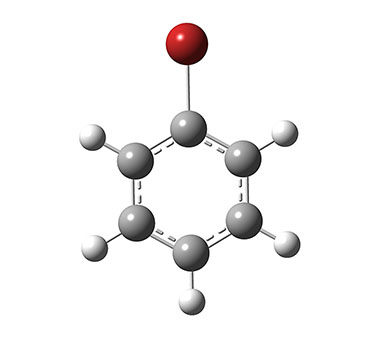
Gaussian offers many pre-defined solvents, which are specified as keywords to the SCRF=Solvent option. In order to specify a solvent not included in this set, it is generally only necessary to specify the value of its dielectric constant ε using additional input to the SCRF keyword, as in this example:
# B3LYP/6-311+G(2d,p) SCRF(Read) Defining a solvent for IEFPCM 0 1 molecule specification Eps=28.5 PCM input section final blank line
For the SMD method, additional parameters are required. These are the 7 items needed to define a solvent for SMD:
| Symbol | Definition | SCRF= Read Parameter |
| ε | Dielectric constant at 298 K. Note that dielectric constant is also called the relative permittivity. | Eps |
| n2 | The square of the index of refraction at optical frequencies (293 K). This is sometimes called |
EpsInf |
| α | Abraham’s hydrogen bond acidity. In particular, in Abraham’s notation this is called |
HbondAcidity |
| β | Abraham’s hydrogen bond basicity. In particular in Abraham’s notation this is called |
HbondBasicity |
| γ | γ = γm/γo, where γm is macroscopic surface tension at a liquid-air interface at 298 K, | SurfaceTensionAtInterface |
| and γo is 1 cal mol-1Å-2. Conversion factor: 1 dyne/cm = 1.43932 cal mol-1 Å-2 | ||
| Φ | Aromaticity: fraction of non-hydrogenic solvent atoms that are aromatic carbon atoms. | CarbonAromaticity |
| Ψ | Electronegative halogenicity: fraction of non-hydrogenic solvent atoms that are F, Cl, or Br. | ElectronegativeHalogenicity |

This example shows the SCRF additional input keywords needed to define the solvent bromobenzene:
| # B3LYP/6-31G(d) 5D SCRF(SMD,Solvent=Generic,Read) | |
| 0 1 | |
| molecule specification | |
| Input section for PCM keywords | |
| Eps=5.3954 | ε |
| EpsInf=2.432664 | n2 |
| HbondAcidity=0.00 | α |
| HbondBasicity=0.09 | β |
| SurfaceTensionAtInterface=50.72 | γ |
| CarbonAromaticity=0.857 | φ |
| ElectronegativeHalogenicity=0.143 | ψ |
| Blank line terminates PCM input | |
Last updated on: 26 June 2018.































